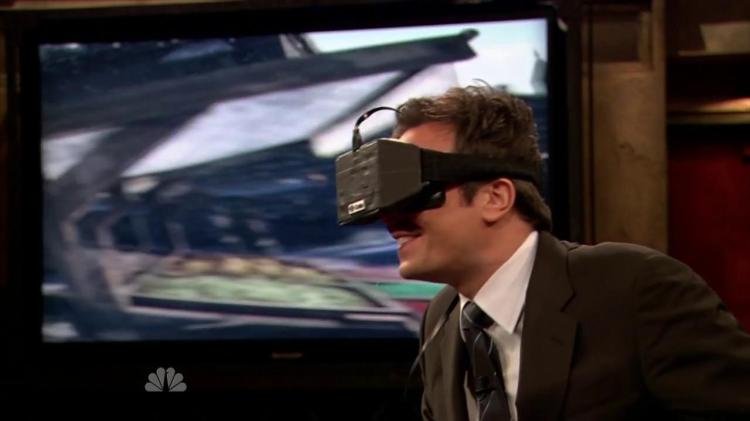Iribe: You can do it with a team as small as a few people, like a mobile game. That’s just a very small experience. Then you can ramp it up to as large as you want, like a traditional console experience. I don’t think that the 200, 300, 400 person teams make sense right now when we haven’t even shipped a consumer product yet. It’s going to be smaller teams figuring out what works and what doesn’t.
This is such a new canvas and new platform. So many mechanics that worked in 2D don’t work in VR. A lot of it is around R&D and experimentation. It’s better for those teams to be small and iterative, to just sit there and innovate and fail a lot until they start to figure out the things that do work.
When we first started, two years ago, John Carmack showed off Doom 3 BFG running down hallways in VR. When we first saw it, we thought this would be it. You’re going to run down hallways and blow stuff up. Then, within a few seconds of trying it — well, that was pretty intense. Maybe we need to slow this down a lot?
As we’ve gone on, over the last two years, we’ve been slowing down the experiences, making it feel a lot more natural and comfortable. That’s important for developers to take note of. This is not a rocket-jumping VR world we’re going to live in. It’s going to be largely stationary experiences where you have incredible virtual worlds around you. You have your virtual avatars where you believe they’re real around you. You’re playing games and encountering experiences together. It’s not necessarily going to be rocket-jumping through the world.
GamesBeat: Do you think the user is going to be seated and stationary?
Iribe: We’re promoting a seated experience. I love to see Sony out there getting everyone to stand up, taking that step. We could have done that, but we felt that, from a safety perspective, it was better to message to the community, “Stay seated.” People can do what they want as they stand up and move around, but since you are replacing your vision with virtual vision, it makes sense to stay seated. We even joked that maybe we should be shipping seatbelts with this. You want to err on the side of safety.
GamesBeat: Augmented reality is also moving in parallel here. Do you guys have any interest in that?
Iribe: We’re focused on VR. You’ll see augmented VR come into play, where you start to scan in the world around you, or near-field objects. As soon as you can see your hands, you’re going to want to touch things and hold things and scan those items in also. That’s something that will come naturally, very quickly.
But the augmented world — it’s just a different experience. It’s a different use case. In the VR world, you can deliver the sense of virtual presence, where you truly feel like you’re present in a new space. You can’t do that in an augmented reality because it’s an overlay on top of real space. They’re just fundamentally different use cases.
We can focus on a lot of virtual-presence games and entertainment and experiences where your brain believes someone’s really in front of you. In AR, you can’t do that. They’re going to be a hologram floating there. Your brain will detect that they’re not really here. It will take many years – I would err on the side of decades – before you’re able to 100 percent match all the lighting and details of this world to believe, through a transparent set of glasses, that an overlaid object is really there. That’s what we call not tractable. We don’t know where to start doing that.
In VR, if you render the whole world in 3D, suddenly your brain says, “Hey, this all matches.” As long as the head tracking is precise enough, with low enough latency, I feel comfortable in the space. I’m going to believe that it’s real and that I’m here.
GamesBeat: In January or March, you showed DK2. That still had a bit of the screen-door effect. How soon will it be before you get that part taken care of?
Iribe: Consumer V1 will not have the screen door. We’re addressing that.
GamesBeat: Is this the same version here, or do you have something new?


